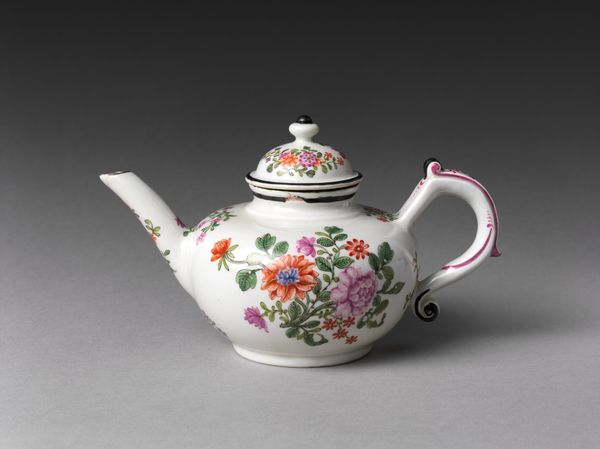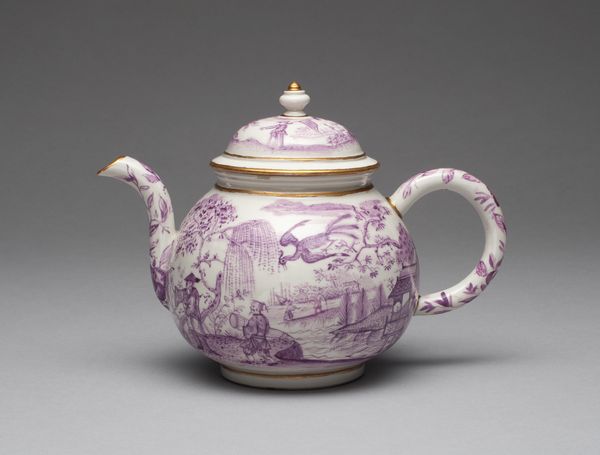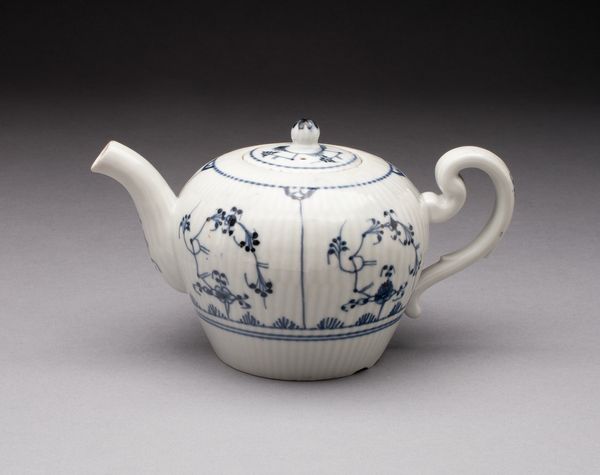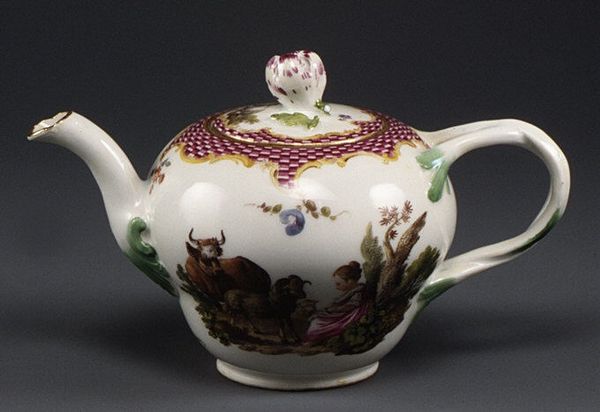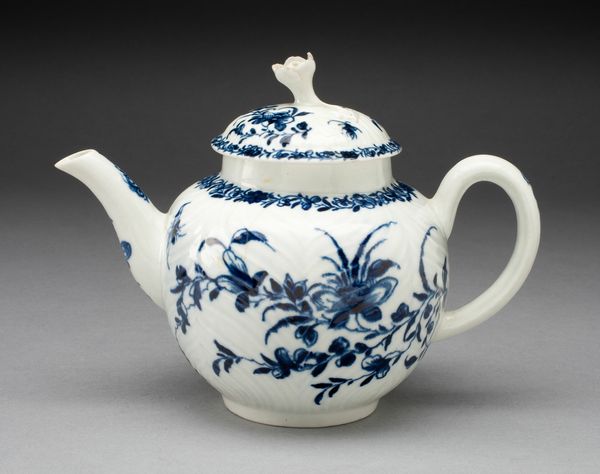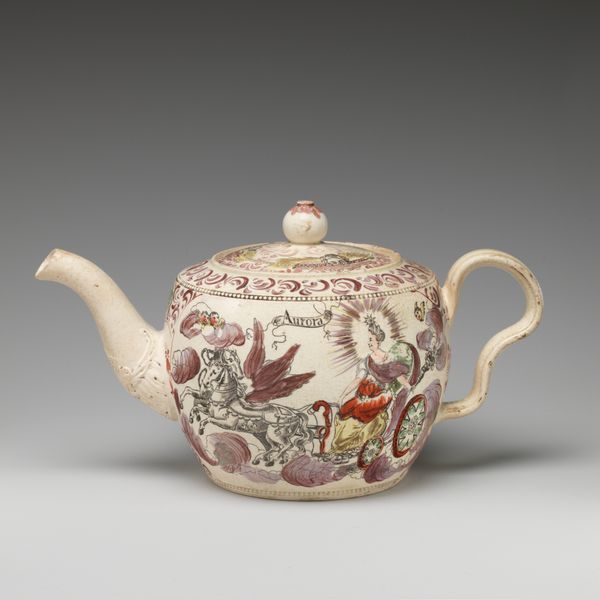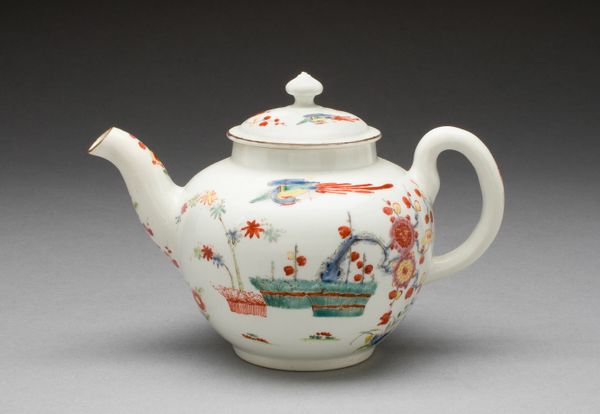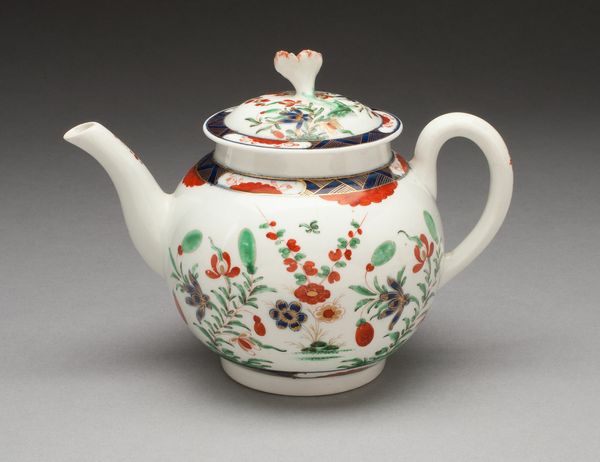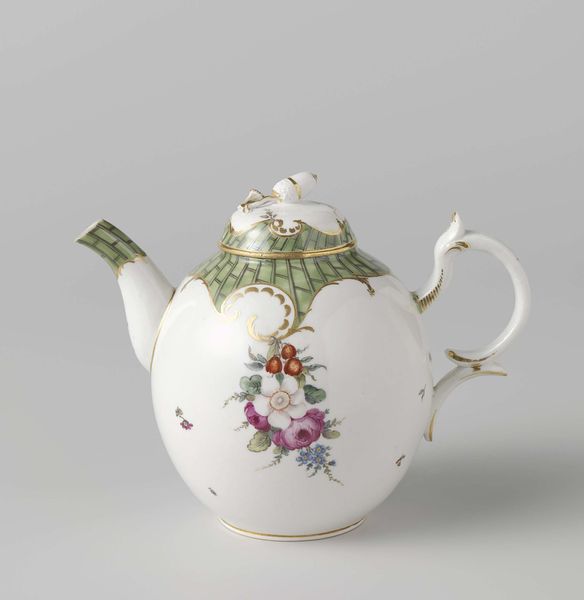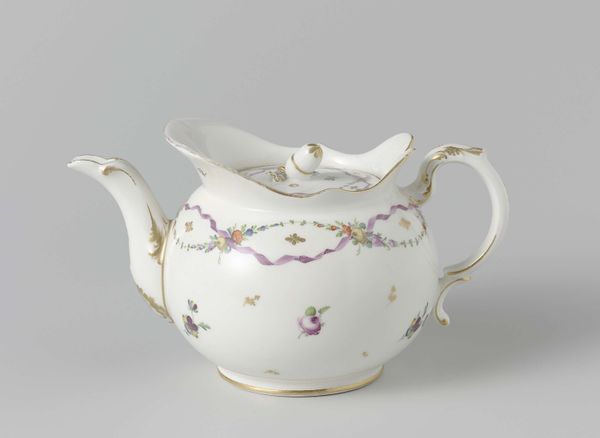
ceramic, porcelain
#
ceramic
#
jewelry design
#
porcelain
#
decorative-art
#
rococo
Dimensions: H. 9.5 cm (3 3/4 in.)
Copyright: Public Domain
Curator: My first impression is one of delicate sophistication. The shape, the handle, even the spout is so refined. Editor: Indeed. What you are admiring is a porcelain teapot, made around 1770 by the Fürstenberg Porcelain Factory. Currently, it resides here at the Art Institute of Chicago. Curator: It has such a distinctive rococo aesthetic. The lavender-hued frame really accentuates the pastoral scene. How might the context of its creation have influenced this ornamental style? Editor: Rococo, during that era, signaled wealth and elegance, reflecting aristocratic tastes. Fine porcelain teapots became prized possessions and were associated with the rituals of elite sociability. As new trade routes flourished and the consumption of imported tea grew, elaborate tea services underscored one’s position within society. Curator: I find myself intrigued by the monochrome landscape featured so prominently on the teapot. What statement might the factory have been attempting to make in utilizing only black ink in this vignette? Editor: Factories often sourced print imagery that reflected fashionable interests like classical architecture or idyllic landscapes. Remember, printing and porcelain decoration evolved simultaneously, influencing decorative trends across mediums. As porcelain became more widely attainable, manufacturers often relied on established trends and the cultural status conveyed by particular imagery, ensuring appeal and driving sales within an evolving market. Curator: I think examining the handle's design helps confirm that porcelain design, especially in items like this, elevates utilitarian objects to aesthetic treasures. It makes something as basic as drinking tea feel incredibly formal. Editor: I agree. This "Teapot" epitomizes how social rituals influenced 18th-century manufacturing—displaying how tastes can literally shape both commodities and customs. Curator: Analyzing it solely through the lens of design, it offers insights into historical trends. I appreciate now how formal elements interact, creating an evocative narrative. Editor: And situating such a beautiful artwork like this inside its socio-cultural moment brings further dimension, allowing us to comprehend its ongoing social currency.
Comments
No comments
Be the first to comment and join the conversation on the ultimate creative platform.
